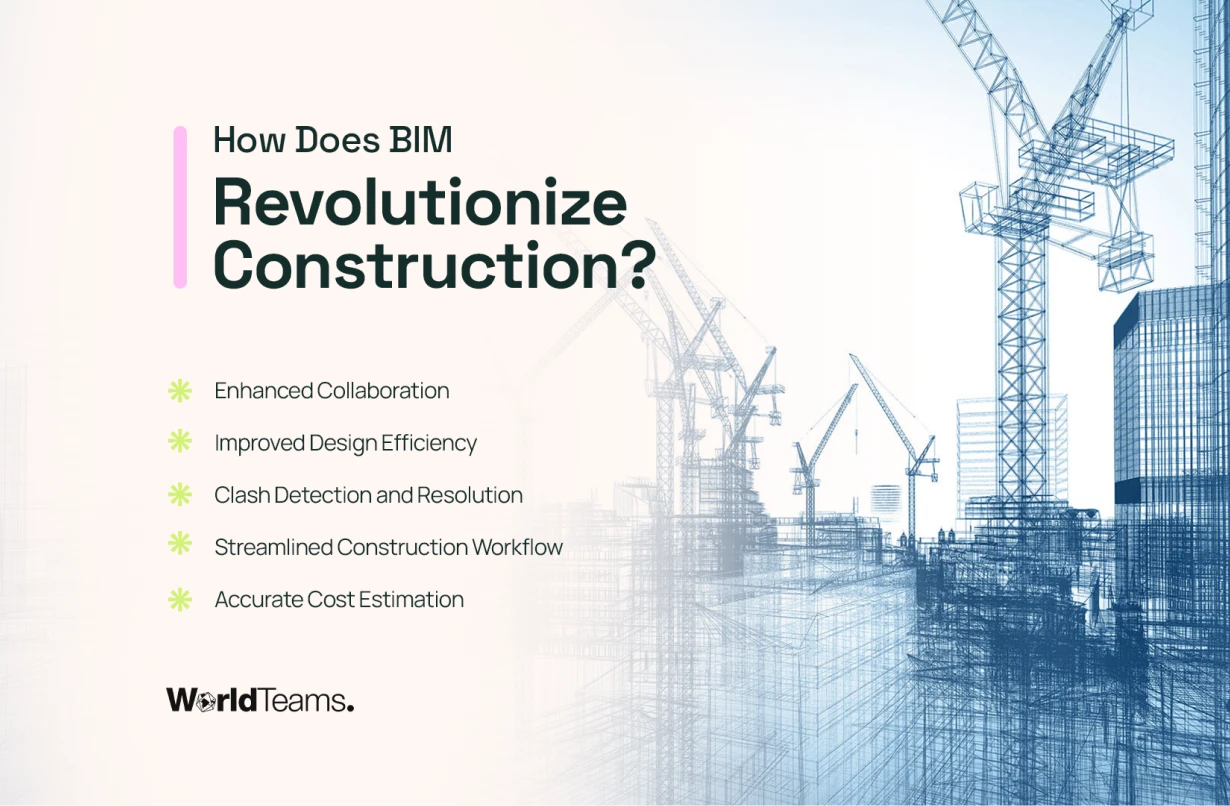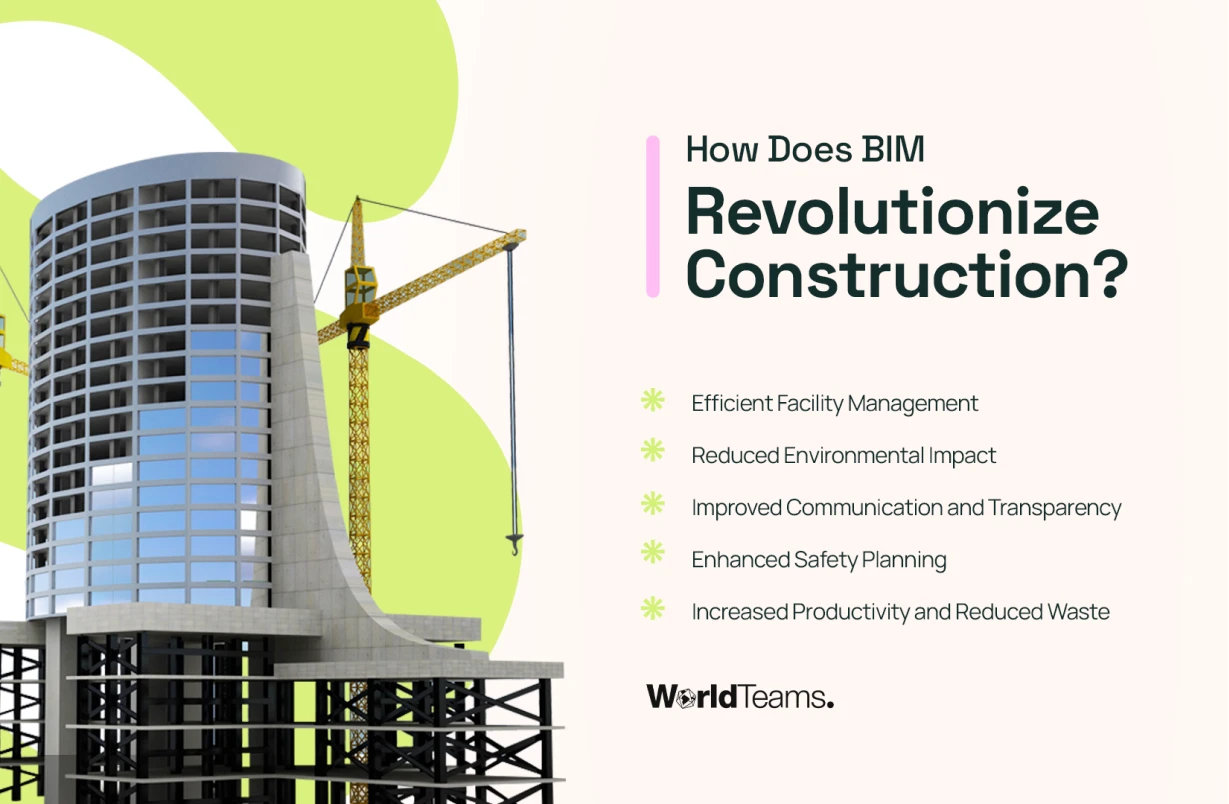What is BIM and Why It’s Revolutionizing Construction

What is BIM and Why It’s Revolutionizing Construction
The construction industry is undergoing a seismic shift. Gone are the days of relying solely on paper blueprints and siloed communication. Enter Building Information Modeling (BIM), a game-changer that’s transforming how buildings are planned, designed, constructed, and managed.
What is BIM?
In simpler terms, BIM stands for Building Information Modeling. It’s not just a fancy 3D model; it’s a comprehensive digital representation of a building or infrastructure project. But BIM goes beyond aesthetics. It incorporates rich data about every element – from walls and windows to electrical wiring and plumbing systems. Think of it as a single source of truth for your entire project, accessible to everyone involved.
What’s Included in a BIM Model?
A BIM model isn’t just a pretty picture. Each element within the model holds a wealth of information, including:
Geometric data
This forms the 3D representation, defining the size, shape, and location of each building component.
Material properties
BIM models can specify the type of material used for each element, from concrete to steel to insulation.
Non-geometric data
This encompasses crucial details like fire ratings, manufacturer information, and maintenance requirements.
Imagine a wall in your model. In addition to its dimensions and location, the model might contain information about the type of brick used, its thermal resistance, and even the recommended cleaning methods.

How Does BIM Revolutionize Construction?
Here’s where things get exciting. BIM isn’t just about creating a fancy model; it’s about unlocking a new level of efficiency and collaboration throughout the construction lifecycle. Let’s explore some key benefits:
1. Enhanced Collaboration
BIM fosters a collaborative environment where architects, engineers, contractors, and other stakeholders work together on a unified model. Gone are the days of miscommunication arising from different interpretations of paper plans. With BIM, everyone can access the latest and most accurate information, fostering seamless collaboration even for outsourced architectural services.
2. Improved Design Efficiency
BIM software allows architects and engineers to explore design options virtually, visualizing potential clashes between elements before construction begins. This saves time, reduces costly rework later in the project, and streamlines the entire design process.
3. Clash Detection and Resolution
Imagine discovering a clash between a plumbing pipe and an electrical conduit – after the foundation is poured! With BIM, clash detection software identifies potential conflicts within the model before construction starts. This proactive approach saves money and prevents costly delays.
4. Streamlined Construction Workflow
BIM doesn’t stop with design. Contractors can use the model to generate accurate quantity takeoffs, optimize material ordering, and create detailed construction sequencing plans. This translates to better project control, improved resource allocation, and, ultimately, a smoother construction process.
5. Accurate Cost Estimation
BIM software can extract real-time data on material quantities and dimensions from the model. This allows for more accurate cost estimations, minimizing budget overruns and surprises.

6. Efficient Facility Management
The BIM model’s rich data becomes an invaluable asset even after construction is complete. Facility managers can leverage the model for maintenance planning, space management, and optimizing building performance.
7. Reduced Environmental Impact
BIM can be used to analyze building energy efficiency during the design phase. This allows architects to optimize building systems for better performance, reducing energy consumption and the project’s environmental footprint.
8. Improved Communication and Transparency
BIM provides a single source of truth for the entire project, facilitating clear communication among stakeholders. This fosters transparency, reduces misunderstandings, and helps ensure everyone is on the same page.
9. Enhanced Safety Planning
BIM models can simulate construction workflows, identifying potential safety hazards before construction begins. This allows for proactive safety planning and minimizes risk on the job site.
10. Increased Productivity and Reduced Waste
The benefits of BIM on collaboration, clash detection, and accurate material estimates all contribute to increased overall project productivity. Additionally, BIM can help reduce construction waste by optimizing material usage and facilitating prefabrication.

The Future of BIM
BIM is still evolving, and its future looks bright. We can expect an even greater impact on the construction industry with advancements in cloud-based collaboration platforms, artificial intelligence, and virtual reality (VR). Here are some exciting possibilities:
Real-time project management
Cloud-based platforms will enable real-time access to project data, facilitating better collaboration and decision-making.
AI-powered design optimization
AI algorithms could analyze models and suggest design improvements for energy efficiency or constructability.
VR for immersive design reviews
VR technology could allow stakeholders to walk through BIM models virtually, experiencing the design firsthand and identifying potential issues before construction begins.
Embracing the BIM Revolution
While BIM represents a significant leap forward, it must be acknowledged that adopting this technology requires time, resources, and expertise. Companies may need to invest in BIM software, train employees, and establish standardized workflows. However, the long-term benefits often outweigh the initial challenges.
Is BIM Right for Your Project?
Not every project warrants a full-scale implementation. Factors to consider include project size, complexity, budget, and the level of collaboration required. For smaller projects, simplified approaches or BIM-lite strategies might suffice.
The Future of Construction
BIM is more than just a trend; it’s the future of construction. As technology advances, we can expect even more sophisticated BIM applications. The possibilities are vast, from augmented reality site inspections to predictive analytics for maintenance.
The construction industry is poised to become more efficient, sustainable, and innovative by embracing BIM. This journey promises to deliver greater value to clients, reduce project risks, and enhance the overall built environment.
Key Takeaways
By understanding the power of BIM and its potential to transform the construction industry, businesses can position themselves for success in this evolving landscape.

Are you ready to embark on the BIM journey?
WorldTeams is your ideal partner in harnessing the power of BIM. With our expertise in outsourcing architectural services and architectural design services, we offer cost-effective solutions to help you seamlessly integrate into your projects. Our team of skilled professionals can handle everything from modeling and documentation to clash detection and coordination.
Let us be your trusted partner in transforming your construction processes. Contact us today to discuss your needs and discover how Worldteams can drive your project to new heights.
Ready to elevate your construction projects with BIM? Book a free demo today!









